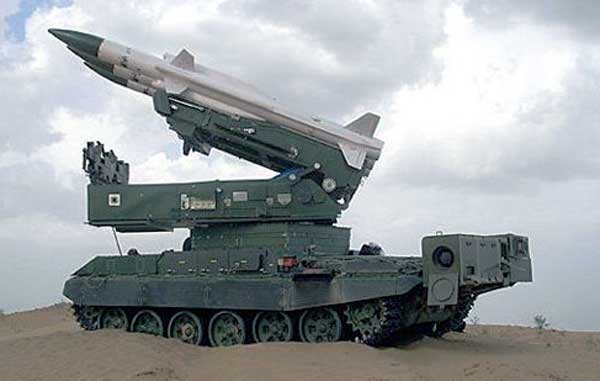The Indian Artillery is currently in a Network Centric Warfare (NCW) Environment that has to provide Surveillance and Reconnaissance resulting in Target Acquisition which would lead to engagement which needs to be monitored to undertake Post Strike Damage Assessment and ensure that the target is destroyed. In NCW, artillery shapes the battle-field, degrades enemy’s war waging capability, destroys his field defences, communication sites, logistics echelons thereby paralysing him and thus accomplishing its mission.
The Regiment of Artillery is currently equipped with a variety of surveillance devices, guns, mortars, rockets and missiles. The surveillance devices are a part of the Surveillance and Target Acquisition (SATA) Regiments. The devices currently held comprise the Unmanned Aerial Vehicles (UAVs) which are of four types. These are the Medium Altitude Long Endurance (MALE), Heron UAV and Short Range UAVs Searcher MK I, Searcher Mk II as also four indigenously built Nishant. These UAVs have been operationally optimised and they are an extremely useful tool of surveillance. Our current holdings are minimal and their numbers need to be enhanced. The DRDO is currently developing a MALE UAV Rustam which will possibly be inducted in the short term.
The SATA units are currently equipped with Medium Range Battlefield Surveillance Radars (MBFSR) and Weapon Locating Radars (WLR). The MBFSR currently held is the ELM 2140 which is able to detect tanks, vehicles and troops. They are held in minimal quantities and been exploited by mobile masts. The WLR currently held is the ANTPQ-37 which has been optimised with a reasonable degree of success. Further SATA units are equipped with Long Range Reconnaissance and Observation System (LORROS). This equipment has excellent day and night surveillance capability and has proved its effectiveness in operational areas. The SATA units also have a passive weapon Locating system known as Sound Ranging. The system currently held is old and needs to be replaced by state of the art equipment. Bharat Electronics in conjunction with DRDO has developed a Weapon Locating Radar which is undergoing evaluation of trials.
As regards Guns the Regiment is equipped with Field, Medium, Self Propelled, Light and Medium Regiments. The Field Regiments possess either 105 mm Indian Field Gun / Light Field Gun or 122mm Field Howitzer. The Medium Regiments possess 130 mm Medium Gun, 155 mm Bofors Medium Gun (39 calibre) and a few regiments of Soltam Guns. The Self Propelled Regiments are equipped with 130 mm Catapult and the Light Regiments are equipped with 120 mm Mortars.
The Regiment of Artillery is holding Rockets and Missiles. The Rocket Regiments are equipped with 122 mm GRAD BM -21 rockets, 214mm Pinaka Rockets and 300 mm Smerch Rockets. The Missile Regiments are equipped with the Super Sonic Cruise Missile BrahMos which has a range of 290 km. Recently India has joined the Missile Technology Control Regime which has resulted in trials for extending the range up to possibly 400 Km.
Recently the Regiment has inducted six 155 mm (45calibre) Dhanush Gun systems manufactured by the Ordnance Factory Board. It is also reported they have placed an indent for 114 of these Guns. This is to be followed by a further order of about 300 Guns. The Gun is designed, developed and Made in India which enhances our indigenous capability of manufacturing state of the art equipment. Further the equipment has undergone extensive evaluation trials and would attain a maximum range of about 38 Km.
The other Guns pertain to the 155 mm Ultra Light Howitzer (39 calibre) and the Self Propelled Gun K 9 Vajra (52 Calibre). The Ultra Light Howitzer (ULH) is manufactured by BAE Systems and is being procured by the Foreign Military Sales Route from the United States (US). While a few pieces would be obtained from the Original Equipment Manufacturer, the remaining would be Made in India by Mahindra Defence. The Gun is extremely light and can be helilifted by a helicopter Chinook, CH 47 C which is being procured by the Indian Air Force. It is expected that 145 pieces would be added to the inventory.
The K 9 Vajra is a Self Propelled (SP) Gun is an indigenised version of a South Korean SP Gun which would be made in India by Larsen and Toubro Limited. The Gun would be utilised in the desert regions bordering our Western portion and would be the first SP Gun after the 105 mm Abbot and the 130 mm Catapult to be inducted into The Army. About 100 pieces would be the initial order.
This is a thundering moment for the Indian Artillery which has broken the glass ceiling and taken a Great Leap Forward in the field of modernisation.






Thank you.
More factual than all those stupid salesmen articles, all critical of one or other hardware, in the process pushing for their own product sales.